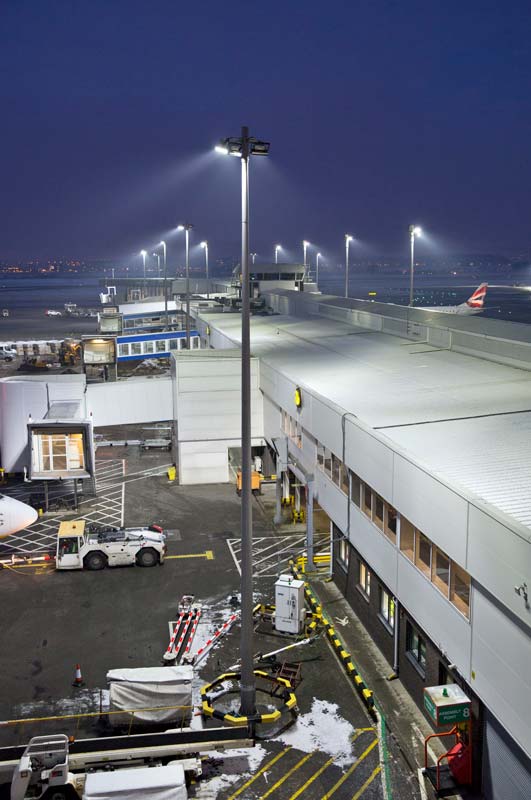The 2021 United Nations Climate Change Conference – better known as COP26 – is now underway. All eyes are on host city Glasgow as delegates gather to discuss the urgent action needed to mitigate the increasingly devastating impact of climate change.
Six years on from the Paris Agreement, COP26 has been billed as “the world’s best last chance to get runaway climate change under control .” Aiming to secure a global commitment to issues including carbon net-zero by 2050, the restoration of natural ecosystems, and at least $100bn in climate finance per year, the events that play out this November will shape not only the next decade, but the long-term future of the planet as a whole.
As a lighting company, environmental responsibility is something that we’re acutely aware of here at Midstream. Lighting accounts for 5% of CO2 emissions globally, with a large amount of that generated purely by the use of inefficient and outdated technologies – incandescent or halogen bulbs in a home or office environment, and high-pressure sodium (HPS), metal halide, and fluorescent lighting outside.
The environmental impact of lighting is one of the primary reasons that Midstream has always used light-emitting diode (LED) technologies. LEDs have been at the heart of our products since day one, offering significant benefits for both our customers and the planet. The energy-saving capabilities of LEDs are such that, if the entire world switched to them, we could save around 1.4bn tonnes of CO2 – a figure that would make a huge contribution to those targets outlined in Paris.
Numbers in the billions are difficult to comprehend, of course, as is change that requires the entire world to take action overnight. Results from some of the projects that Midstream has delivered, on the other hand, tell a much more relatable story.
- At Gatwick Airport in the UK, we reduced energy consumption by 40% with our Titan Series floodlights.
- At Rome Fiumicino Airport, we delivered energy savings of more than 60% – removing 250 lights while improving performance in the process.
- And at the Port of Venice, we reduced the amount of energy used by 70%.
Another project of ours – with equally impressive energy saving results – will be on show for many of the COP delegates as they land in Scotland. Glasgow Airport, Scotland’s largest long-haul airport, have been leading transformational change and sustainability for the past 10 years.
Glasgow Airport came to Midstream Lighting ahead of the 2014 Commonwealth Games, which being hosted in Glasgow. Their challenge was to upgrade their apron lighting, meet CAP 168 compliance standards, and reduce their energy consumption.
After a complete review of Glasgow Airport’s lighting facilities, we put our Design Team on the case. The solution they came up with was to upgrade all high-pressure sodium apron lighting to our flagship Titan Series LED Floodlight.
We believe this has made Glasgow the first airport in the world to have a fully LED-lit apron in full compliance with the requirements of ICAO. The new apron lighting system significantly reduced Glasgow Airport’s energy consumption (60% reduction), while streamlining operations and improving safety with enhanced coverage, reduced glare and increased lighting levels, just in time for the 2014 Commonwealth Games. Added to that, the airport is now safer for staff and passengers, it’s more secure, and with less downtime runs more smoothly.
However, in 2021, Glasgow Airport has engaged Midstream again, eight years on, to upgrade the first-generation LED floodlights with the latest generation; creating further energy savings and lighting improvements in time for the COP26 Conference. The old lights will be recycled, giving a real-life case of the circular economy in action. Midstream is proud to continue supporting Glasgow Airport in being a true leader in the fight against climate change through energy reduction and sustainable business practise.

The work that we do for airports is particularly important considering the need to balance efficiency with effectiveness. As is the case in any industrial environment, lighting plays a key role in visibility and safety at airports, so performance is paramount. Our Lighting Design Team has spent countless hours optimising the performance of our aviation products, ensuring that they maximise light levels while minimising the amount of energy required to do so.
One of those products, the Mobile Tower Series, won the “Sustainability” category at the inter airport Europe 2021 Innovation Awards held earlier this month. With the Mobile Tower’s LEDs capable of reducing typical energy consumption by as much as 70%, the unit serves to prove that it’s possible to maintain – and in many cases, improve – lighting quality while still reducing energy usage and carbon emissions.
While we embed sustainability into all of our products, Midstream’s commitment to the environment doesn’t end there. In September this year, we signed The Climate Pledge – an international programme that encourages businesses to achieve net-zero in 2040, 10 years before the Paris Agreement specifies. At the time of writing, Midstream is one of just over 200 companies to have signed the pledge, joining the likes of Salesforce, Proctor & Gamble, Visa, Heineken, and more.
We’re excited about where The Climate Pledge will take us – not only in terms of our own contribution, but the experiences and learnings that we can share with our customers as they make their own organisations greener and more sustainable too